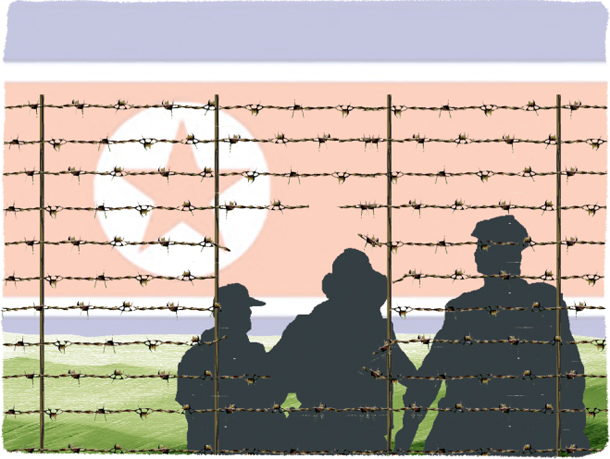Rethinking defector policy

There are 30,000 defectors who left North Korea and settled in the South. Until the 1980s, about a dozen North Korean soldiers serving around the DMZ came to the South annually. At the time, North Korean defectors were treated as men of national merit and used as a propaganda tools to advocate the South’s superiority. After the 1990s, soldiers hardly crossed the DMZ, and the majority of the defectors were the ones who escaped to China due to starvation and the “Arduous March.” In 1999, 100 defectors came to South Korea, and in 2002, the number increased to over 1,000. In 2009, 2,914 North Koreans defected to the South.
Until the mid-2000s, the motivation for defection was mostly a matter of simple survival. Recently, reuniting with families, providing better educational opportunities for children and economic prosperity have been named as the major motivations. While the North Korean economy is improving, markets are active and starvation has been resolved, North Koreans continue to defect. The defectors who came first would bring their families left behind.
The business of dealing with the defectors has been handled by the Ministry of Unification since 1997, after being under the jurisdiction of the Ministry of National Defense, the Ministry of Patriots and Veterans Affairs and the Ministry of Health and Welfare. The unification ministry promotes various systematic policies to help them become independent and successfully settle in South Korea. The government provides generous support for social adaptation training, settlement subsidies, housing, medical care, education, vocational training and job referrals. However, despite these positive measures, the actual level of settlement of defectors in Korean society is not very high. There are many cases of failure to adjust to a new society, and local residents often do not welcome them.
The joblessness rate of the defectors is nearly three times South Korean residents, and the suicide rate and divorce rate are also high.
Their average income, assets and rates of regular employment are quite lower than the rest of the citizens. While government assistance is systematic and the Ministry of Unification uses more than half of the related expenses on the defectors assistance budget, the situation is not improving. Lately, the residents of the areas where North Korean defectors live are growing unwelcoming. They consider the
community facility unpleasant and oppose it fiercely.
Thousands of North Korean defectors with various profession, academic backgrounds, age, origin and motivation come to Korea every year. But the government still maintains the basic framework created when less than 100 defectors came annually. The North Korean defector policy needs to be fundamentally reorganized to reflect the changes in inter-Korean relationship, international order, background and extent of the defection, motivations and demographic changes.
Another problem is classifying them as a special category and providing a separate assistance system from other citizens. While community integration is emphasized, education and support centers, alternative schools and group homes are exclusively for the defectors. While there are community welfare centers in many neighborhoods, defectors have to go to distant support centers to get education and help.
The controversial Inter-Korean Integration Culture Center can be used by non-defectors, but it is not likely that South Koreans would use it. At this rate, fire stations, clinics and hospitals exclusively for defectors may as well be established. When they are many facilities used by Koreans in the neighborhood, why is it necessary to build facilities exclusively for the defectors?
As North Korean defectors are new settlers, it is necessary to provide them initial education to adapt to the Korean society. But it is reasonable to utilize existing support system as much as possible. For successful settlement, not just the will and efforts of the central government but also the roles of the local government, community and neighbors are important. The pivot of the policy should shift from the center to the regions, from the government to the civilian sector. While the defectors have special status when they enter the country, local communities must embrace them as just another neighbor. Only then will they fulfill their responsibilities and roles as members of the community and work to live as equal South Koreans. The government needs to focus on providing appropriate assistance for the defectors and resolving South Koreans’ unfriendly perception towards them.
Translation by the Korea JoongAng Daily staff.
JoongAng Ilbo, August 3, Page 29
*The author is president of the Database Center for North Korean Human Rights.
Yoon Yeo-Sang










with the Korea JoongAng Daily
To write comments, please log in to one of the accounts.
Standards Board Policy (0/250자)